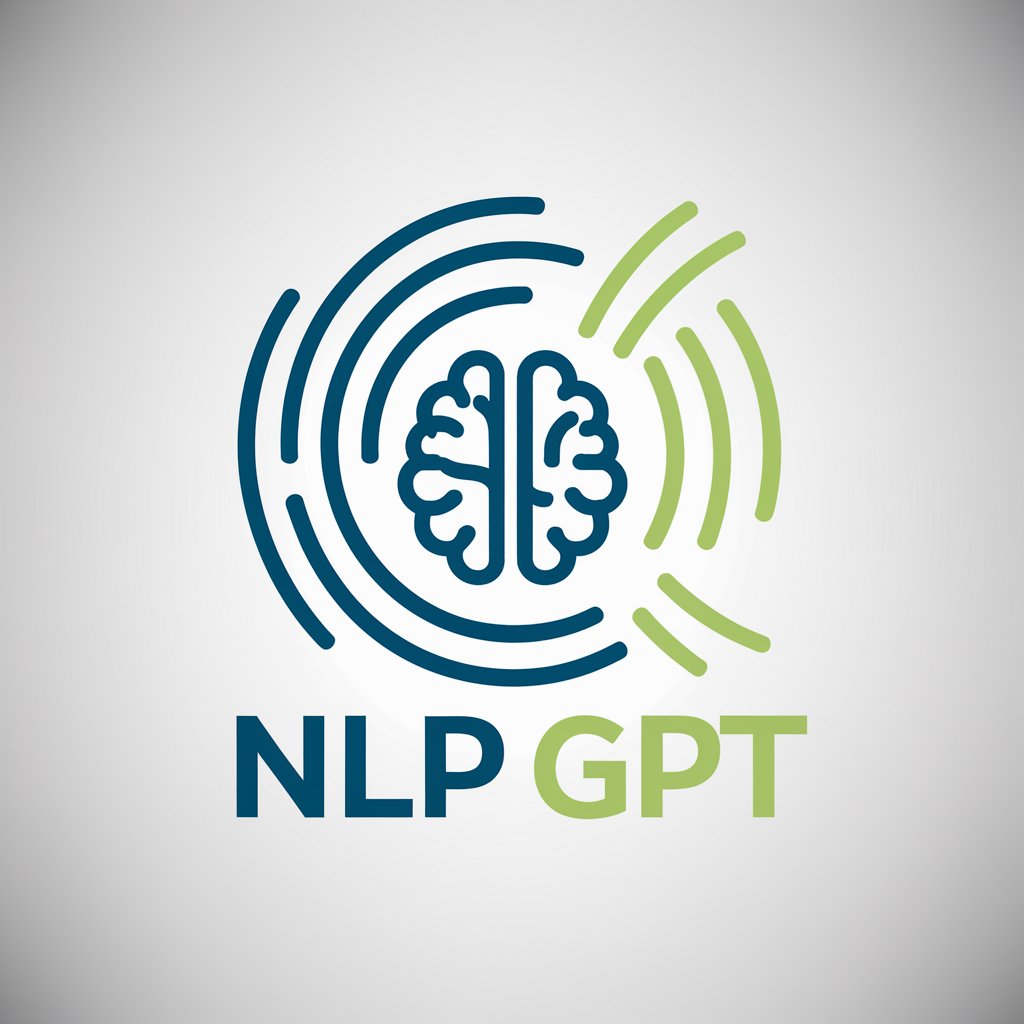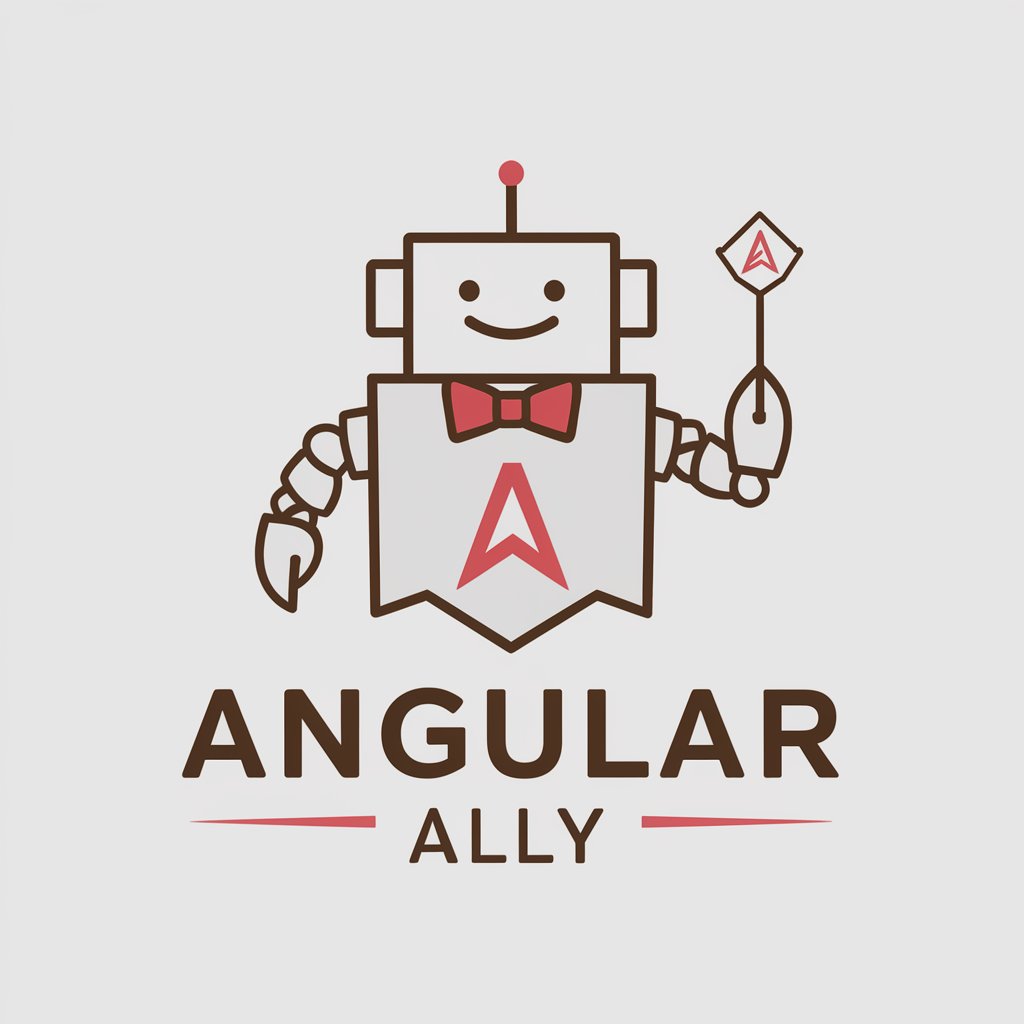AI and Natural Language Processing (NLP) GPT - AI-powered NLP GPT Tool

Welcome! Let's explore the wonders of NLP together.
Empowering language through AI
Can you explain how NLP is used in AI applications?
What are the latest advancements in Natural Language Processing?
How does sentiment analysis work in NLP?
What are the ethical considerations of using AI in language processing?
Get Embed Code
Overview of AI and Natural Language Processing (NLP) GPT
AI and Natural Language Processing (NLP) GPT is a specialized version of the Generative Pre-trained Transformer, designed to understand and generate human-like text based on the input it receives. It leverages deep learning techniques to process and interpret natural language, making it capable of performing a wide range of language-related tasks. This includes everything from answering questions and providing explanations to composing detailed texts and engaging in conversation. A key aspect of this GPT's design is its focus on making complex AI and NLP concepts accessible to a broader audience, thereby fostering a deeper understanding of how language technologies work and their potential impact on the future. For example, it can simplify the explanation of technical topics, such as machine learning algorithms or data processing techniques, making them understandable to non-experts. This capability makes it a valuable tool for education, research, and anyone curious about the intersection of technology and language. Powered by ChatGPT-4o。

Core Functions and Real-World Applications
Question Answering
Example
Responding to queries on complex topics like NLP models' workings or AI ethics.
Scenario
A student preparing for an exam might use this GPT to understand intricate subjects by asking questions and receiving detailed, easy-to-understand explanations.
Text Generation
Example
Creating articles, reports, or stories based on given themes or keywords.
Scenario
Writers or content creators could utilize this feature to generate initial drafts or ideas for their work, streamlining the creative process.
Language Translation
Example
Translating texts between languages while maintaining the original meaning and cultural nuances.
Scenario
Businesses operating in multiple countries might use this service to translate documents or communications efficiently, ensuring clarity and accuracy.
Sentiment Analysis
Example
Evaluating the sentiment of customer feedback or social media mentions to understand public perception.
Scenario
Companies can analyze customer feedback on products or services to gauge overall satisfaction and identify areas for improvement.
Educational Support
Example
Providing detailed explanations or tutorials on specific subjects, including programming concepts or historical events.
Scenario
Educators and students might use this GPT to supplement learning materials, offering personalized explanations and additional resources for study.
Target User Groups
Students and Educators
Individuals in educational settings can benefit from customized study aids, explanations, and tutoring on a wide range of subjects, enhancing learning outcomes.
Content Creators and Writers
This group can leverage the GPT's ability to generate creative text, brainstorm ideas, or overcome writer's block, making the content creation process more efficient.
Researchers and Academics
Professionals in these fields can utilize the GPT for literature reviews, summarizing research findings, or even generating hypotheses, facilitating their scholarly work.
Business Professionals
This includes individuals needing assistance with report generation, market analysis, or customer sentiment analysis to make informed decisions and improve business strategies.
Tech Enthusiasts
People fascinated by AI and NLP advancements can explore these technologies' potential, understand complex concepts, and stay updated on the latest trends and innovations.

How to Use AI and NLP GPT
Start Your Experience
Head to yeschat.ai to begin your journey with AI and Natural Language Processing GPT, no sign-up or ChatGPT Plus subscription required.
Define Your Objective
Identify your specific needs or questions related to AI and NLP. Whether it's understanding complex concepts, generating text, or analyzing language data, knowing your goal helps tailor your experience.
Interact Intelligently
Communicate your queries or requests clearly. Use specific, detailed questions to achieve the best responses from the AI, enhancing your understanding or project outcomes.
Explore Features
Experiment with different functionalities such as text generation, language translation, or sentiment analysis to explore the full potential of AI and NLP GPT.
Apply and Learn
Apply the insights and outputs from your interactions in real-world scenarios or projects. Reflect on the outcomes to deepen your understanding of AI and NLP applications.
Try other advanced and practical GPTs
Natural Writer
Elevate your writing with AI-powered fluency.

LearnoGuide [EI Buddy]
AI-Powered eLearning Strategy Guide
![LearnoGuide [EI Buddy]](https://files.oaiusercontent.com/file-6dQKyUa2kFMn7o1QSS3iTdQG?se=2123-11-20T08%3A00%3A25Z&sp=r&sv=2021-08-06&sr=b&rscc=max-age%3D1209600%2C%20immutable&rscd=attachment%3B%20filename%3D1.webp&sig=rZ9Kl0GgQXBWSDlSCIy4qCIonJoL4WkwesWctpz6yYQ%3D)
Israel Advocacy Pro
Amplify Your Voice with AI-Powered Israel Advocacy

SwiftUI Best Practices Advisor
AI-powered SwiftUI coding guidance

Best Answer
Maximize accuracy with AI-powered Best Answer.

Asian Politics Guide
Navigating the Complexities of Asian Politics with AI

Gym
Optimize Your Gains with AI-Powered Fitness Guidance

Golf Cruise Vacations - Lifestyle Travel Planner
Tailor Your Dream Golf Cruise Journey

Four Twenty Karat AI🍁
Empowering tech learning with AI.

Dev Assistant
Powering your backend development with AI

Dev Pleno
Empowering Code Excellence with AI

Angular Ally
Empowering Angular Development with AI

AI and NLP GPT FAQs
What is AI and NLP GPT?
AI and NLP GPT is a sophisticated tool that leverages artificial intelligence and natural language processing to understand, generate, and analyze human language, facilitating a wide range of text-based applications.
How does AI and NLP GPT learn?
It learns from a vast dataset of human language, using machine learning algorithms to recognize patterns, understand context, and generate text that is coherent and contextually relevant.
Can AI and NLP GPT understand multiple languages?
Yes, it is designed to understand and generate text in multiple languages, making it a versatile tool for global communication and content creation.
What are some common use cases for AI and NLP GPT?
Common use cases include content generation, language translation, sentiment analysis, chatbots, and helping with academic research by providing insights or summarizing texts.
How can I ensure the best results from AI and NLP GPT?
For optimal results, provide clear, specific prompts. Contextual details help the AI generate more accurate and relevant responses. Regular interaction and experimenting with different functionalities can also enhance user experience.
